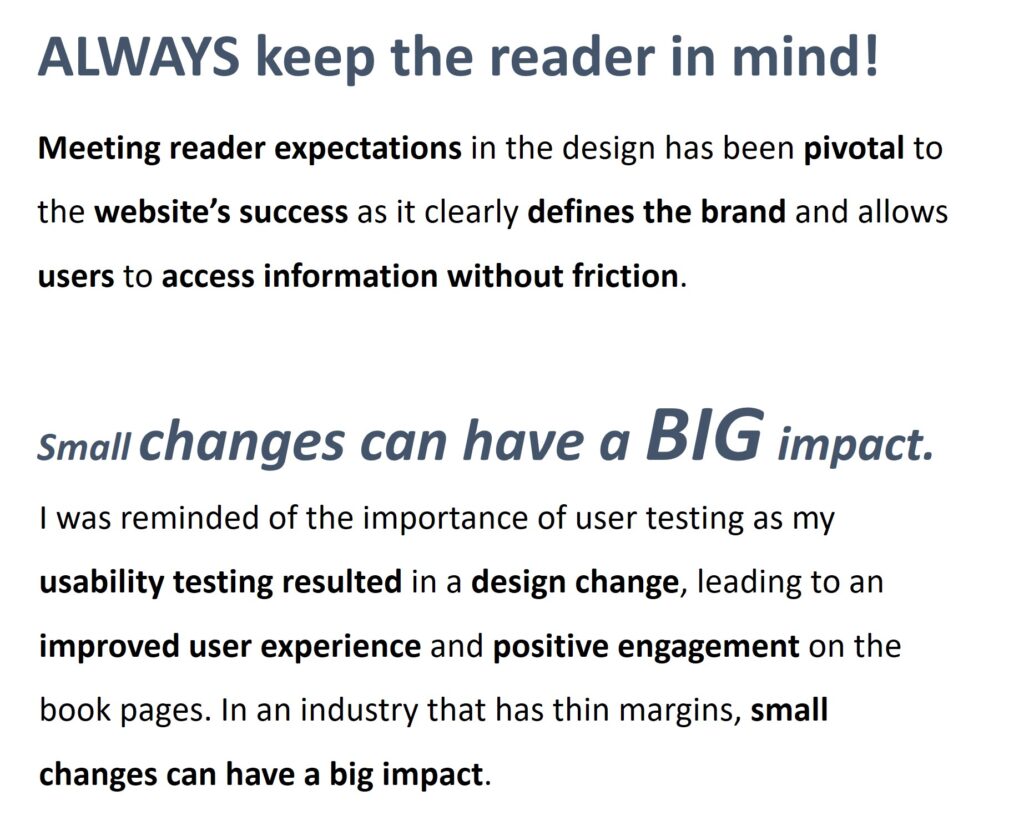Designing a website for fiction thriller author to drive reader engagement
Wheelhouse Publishers
My Role: Principal Designer

Key Outcomes
Designed Crime Thriller author Jason Richards’s website that helpled him grow his author brand by meeting genre reader expectations in the design and allowing users to access information without friction.

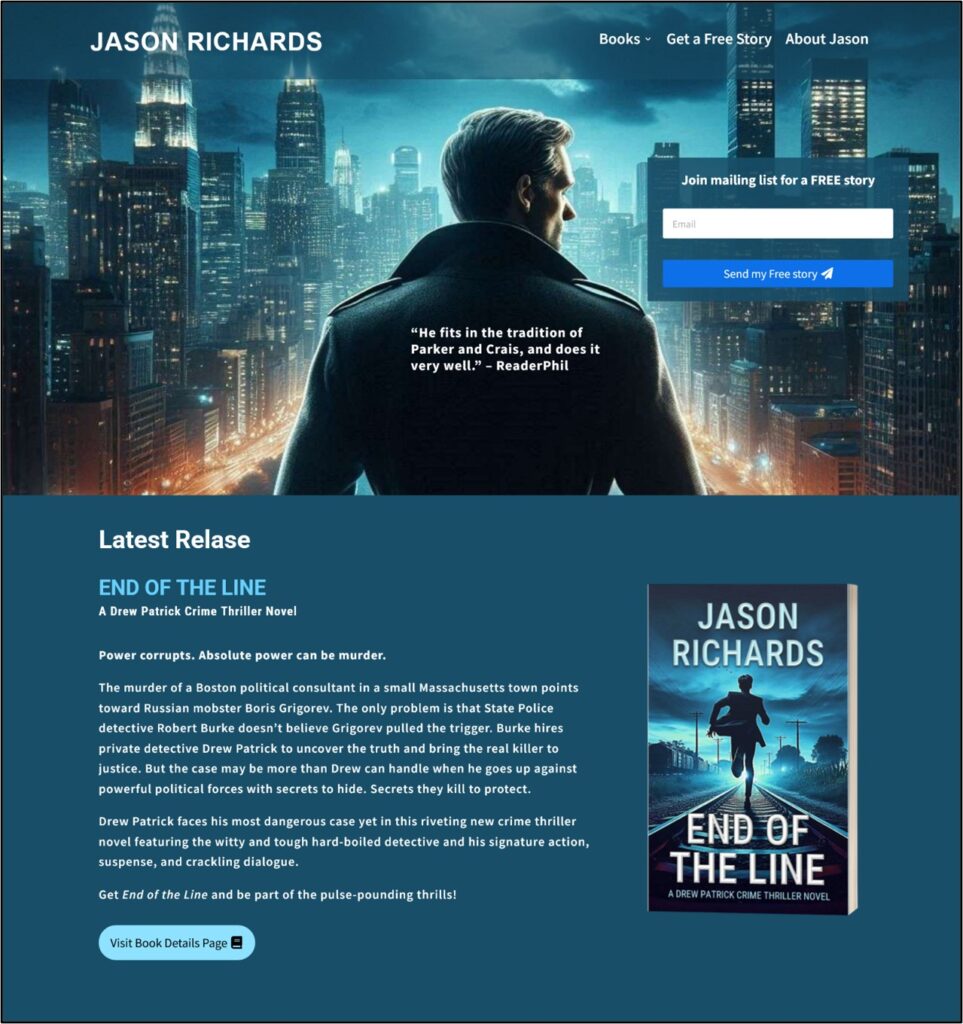
Context & Business Challenge
There are millions of books and thousands of authors, so when Wheelhouse Publishers (my publishing company) was ready to launch new thriller author Jason Richards and his book series, I knew we needed a website to promote his brand and books to readers across the digital devices they use daily.
Driving the UX Process
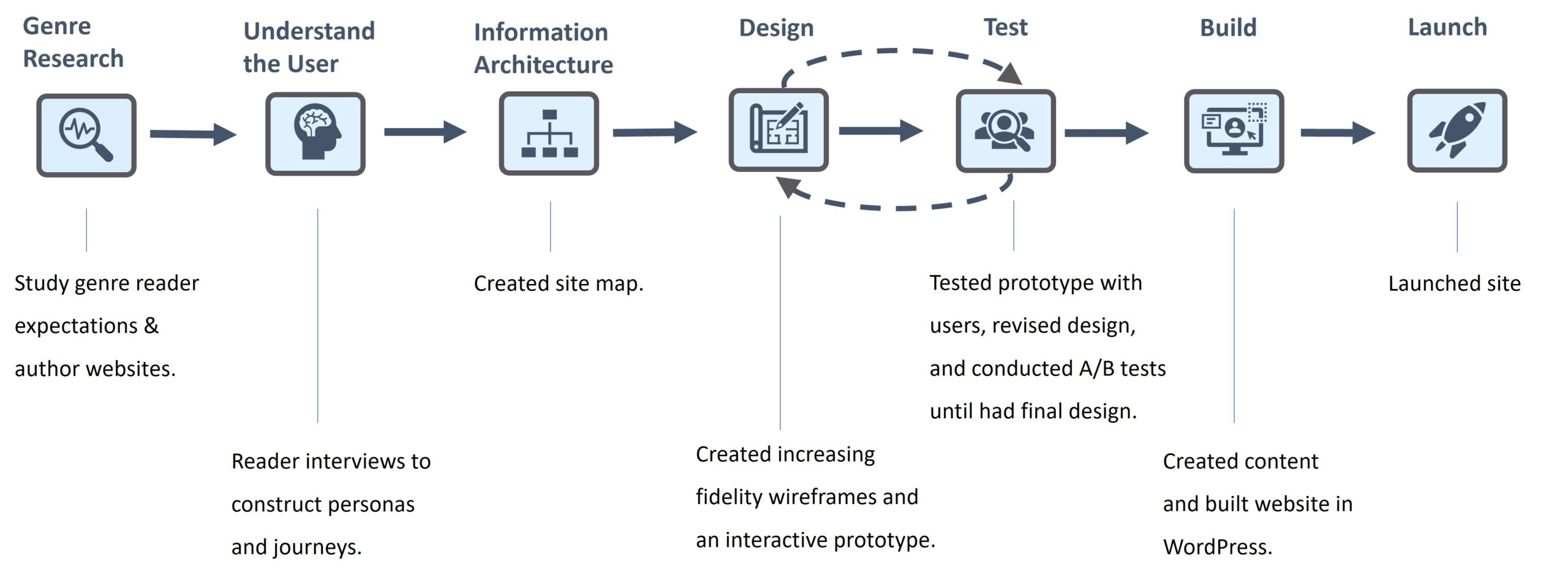
Thriller Genre Research
Book publishing is genre-specific, so I began by analyzing titles on the Amazon Thriller Bestseller list to understand reader expectations through cover designs (yes, readers do first judge a book by its cover).
Crime Thriller Design Insights:
- Colors blues, greens, yellows, reds, purples, oranges, and black feature prominently across the genre. There is a hint of foreboding danger or action.
- Figure facing, or running, away.
- Roboto and similar typography.
- Use of light and shadow to provide sense of danger and suspense.
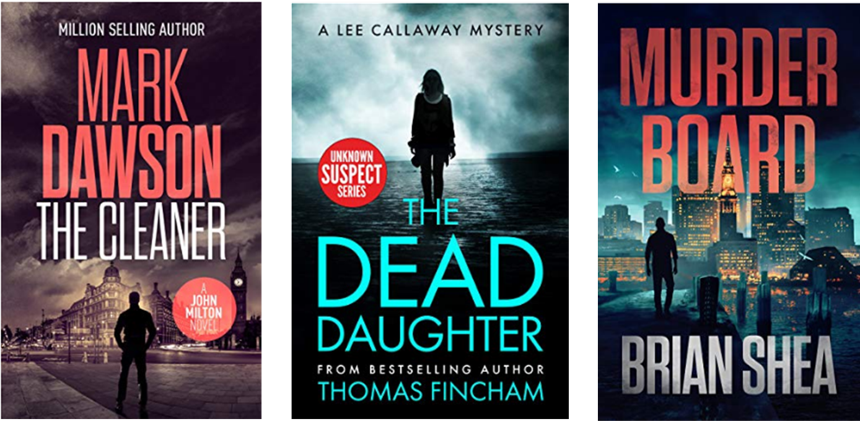
I did a competitive analysis of 3 bestselling independent thriller author websites to get design inspiration and look for points of similarity and difference in thinking about designing Jason’s website.
- Clearly associate with the thriller genre.
- CTA to join reading list for free story on the home page.
- Intuitive navigation with simple site structure to get readers to site content quickly.
- Hero image often covers visible top part of home page.
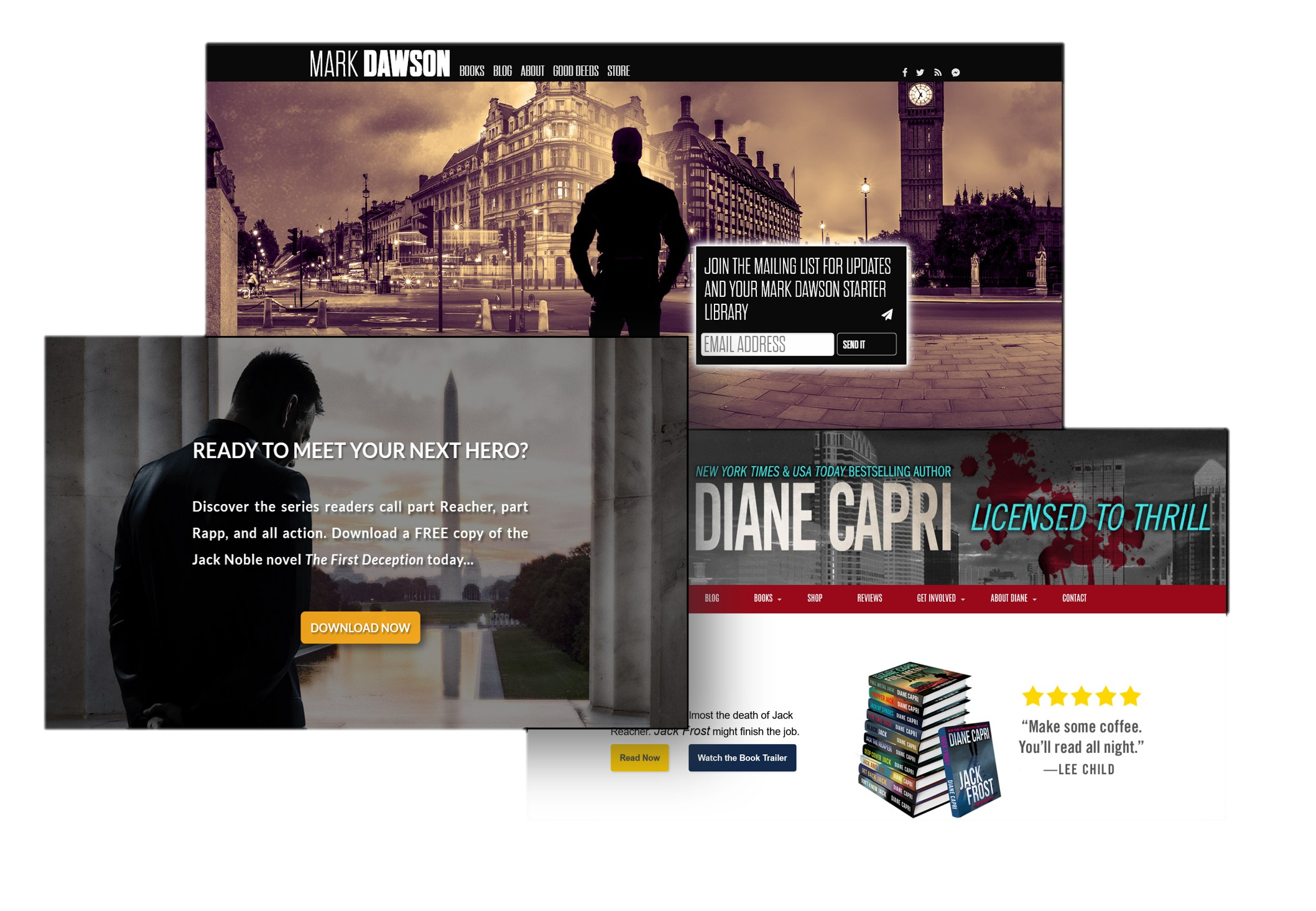
Understanding Users: Thriller Reader Personas
After analyzing market research and gathering reader insights from over 100 book marketing campaigns, I created the personas of Sofia, Barbara, and Frank to represent the 3 primary types of readers Jason can expect for his website.
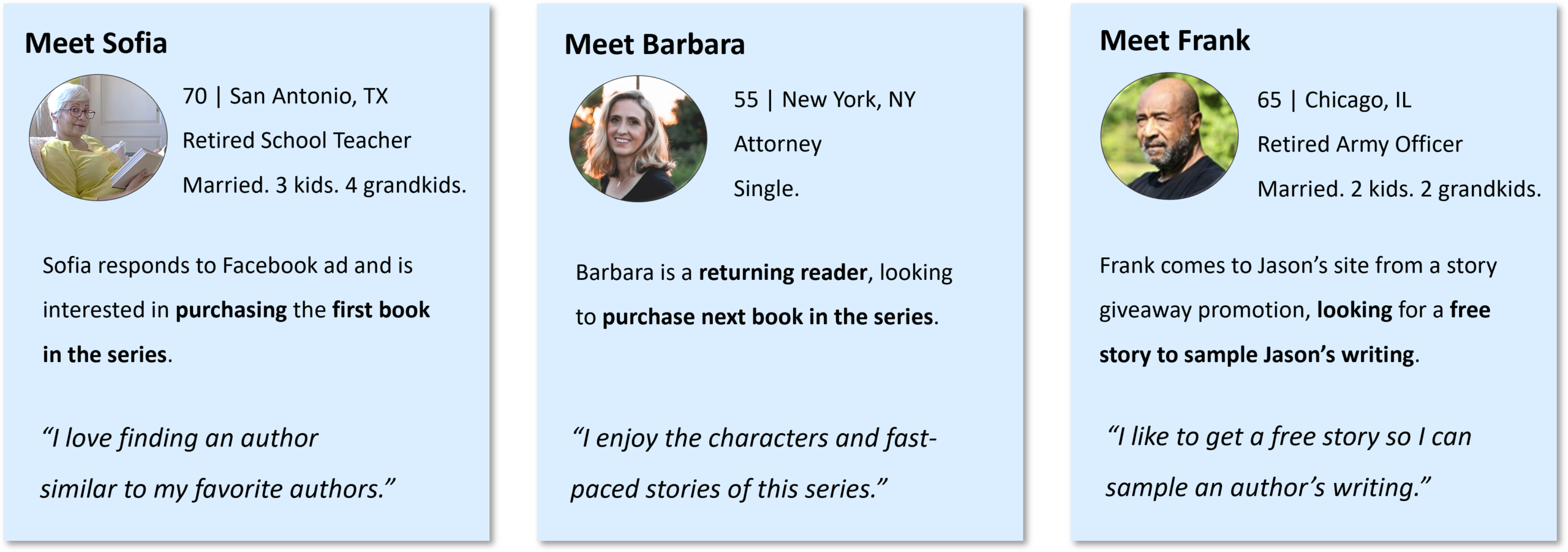
To ensure readers like Sofia, Barbara, and Frank can efficiently navigate the site, I developed reader journeys to identify the paths each of the primary readers would take in completing their goals.

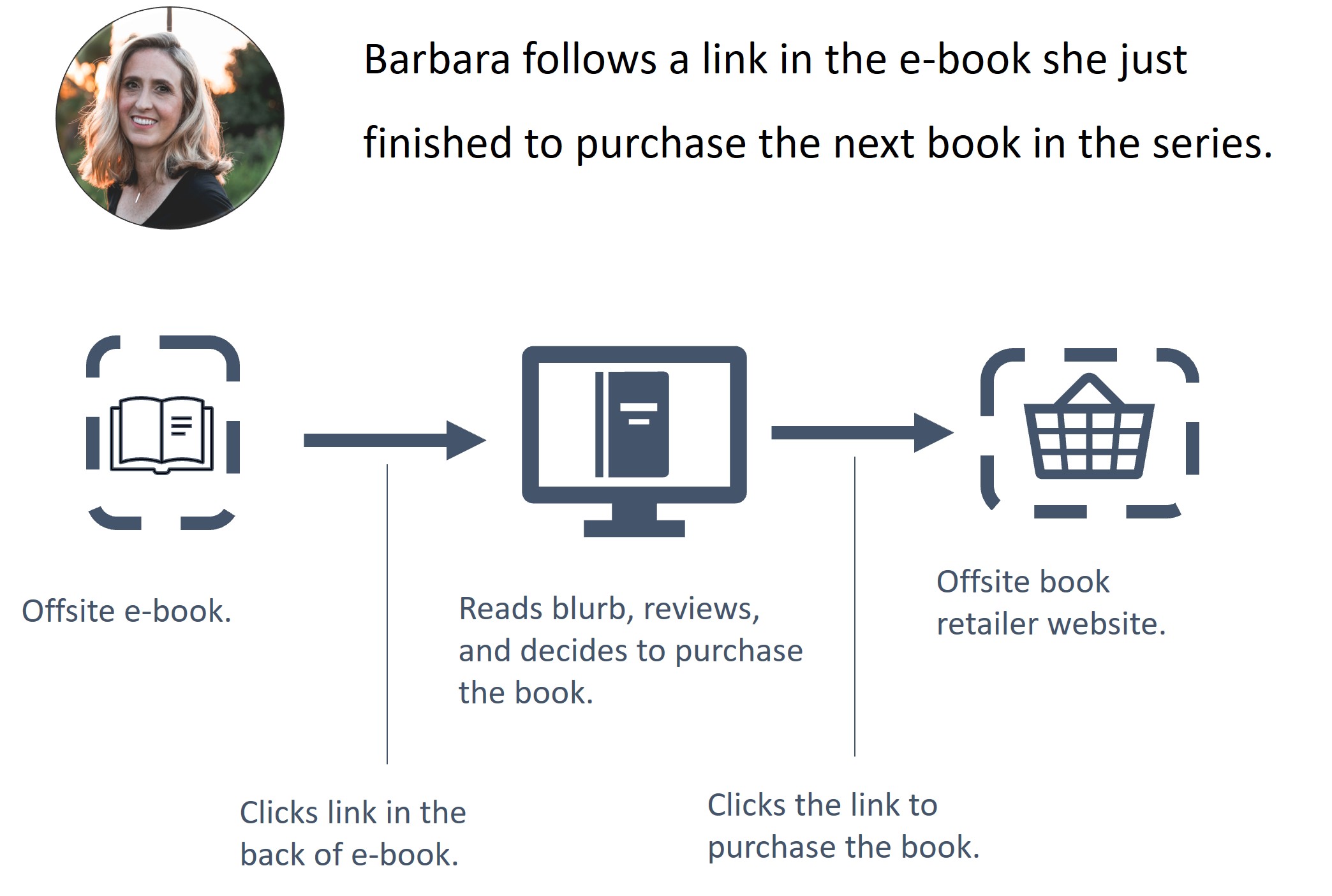

Architecture of Jason’s Website
A site map identified the structure of the website for Sofia, Barbara, and Frank to complete their tasks.
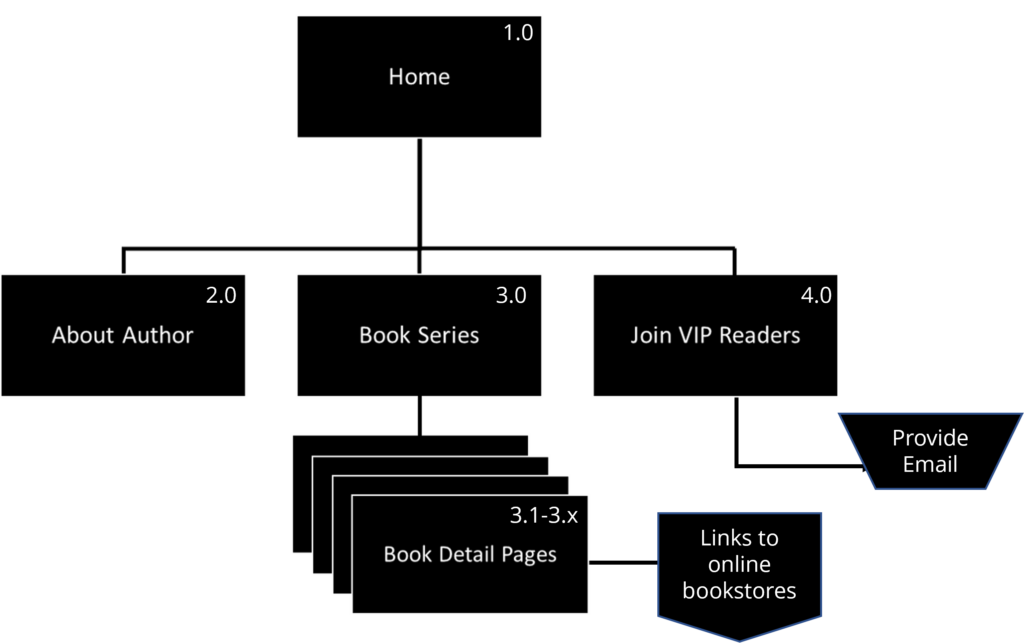
Wireframing Reader Interactions

Sofia can learn about the series and get details on each title.
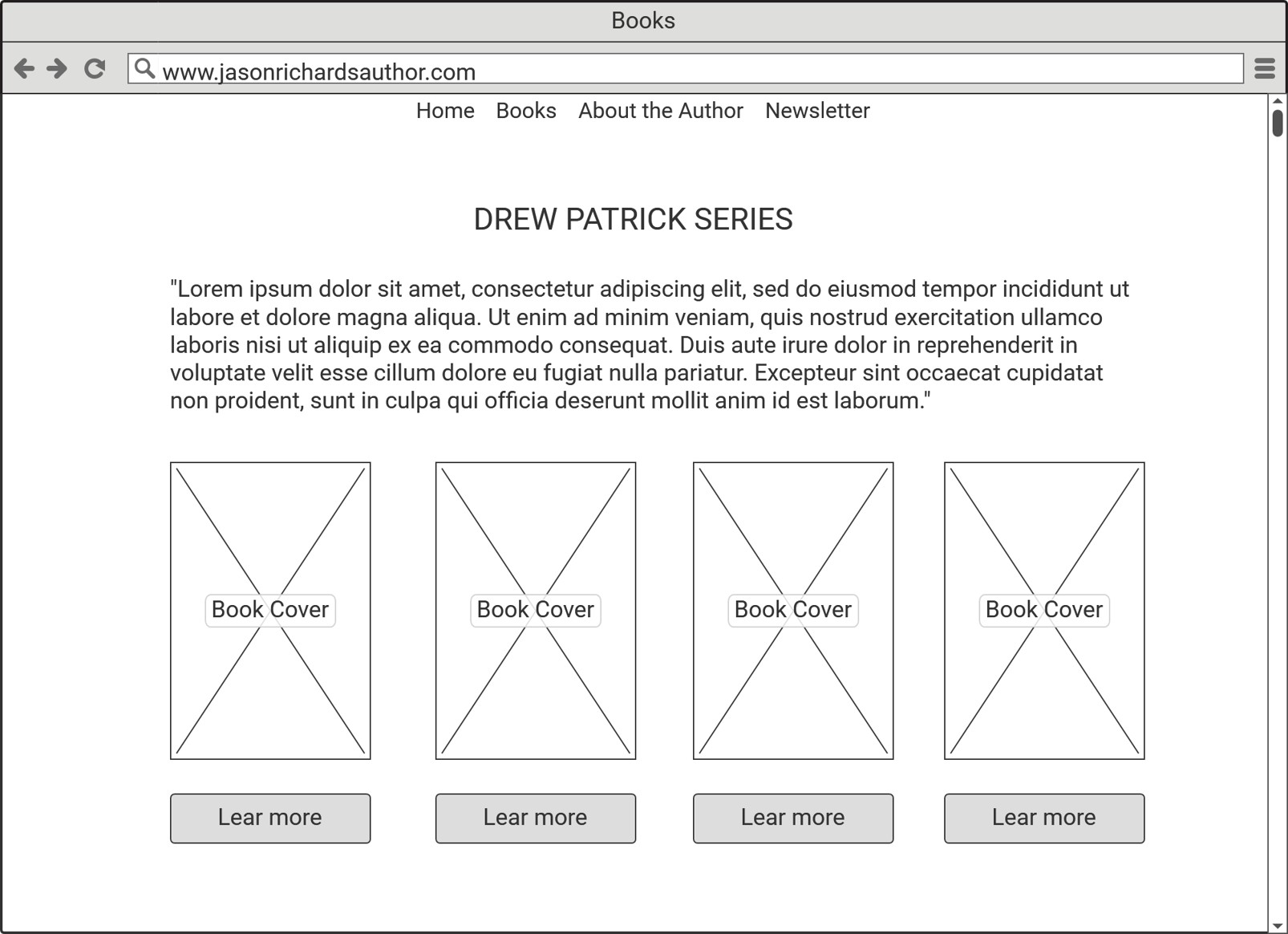

Sofia can learn about Jason and that he writes books like one of her favorite authors.
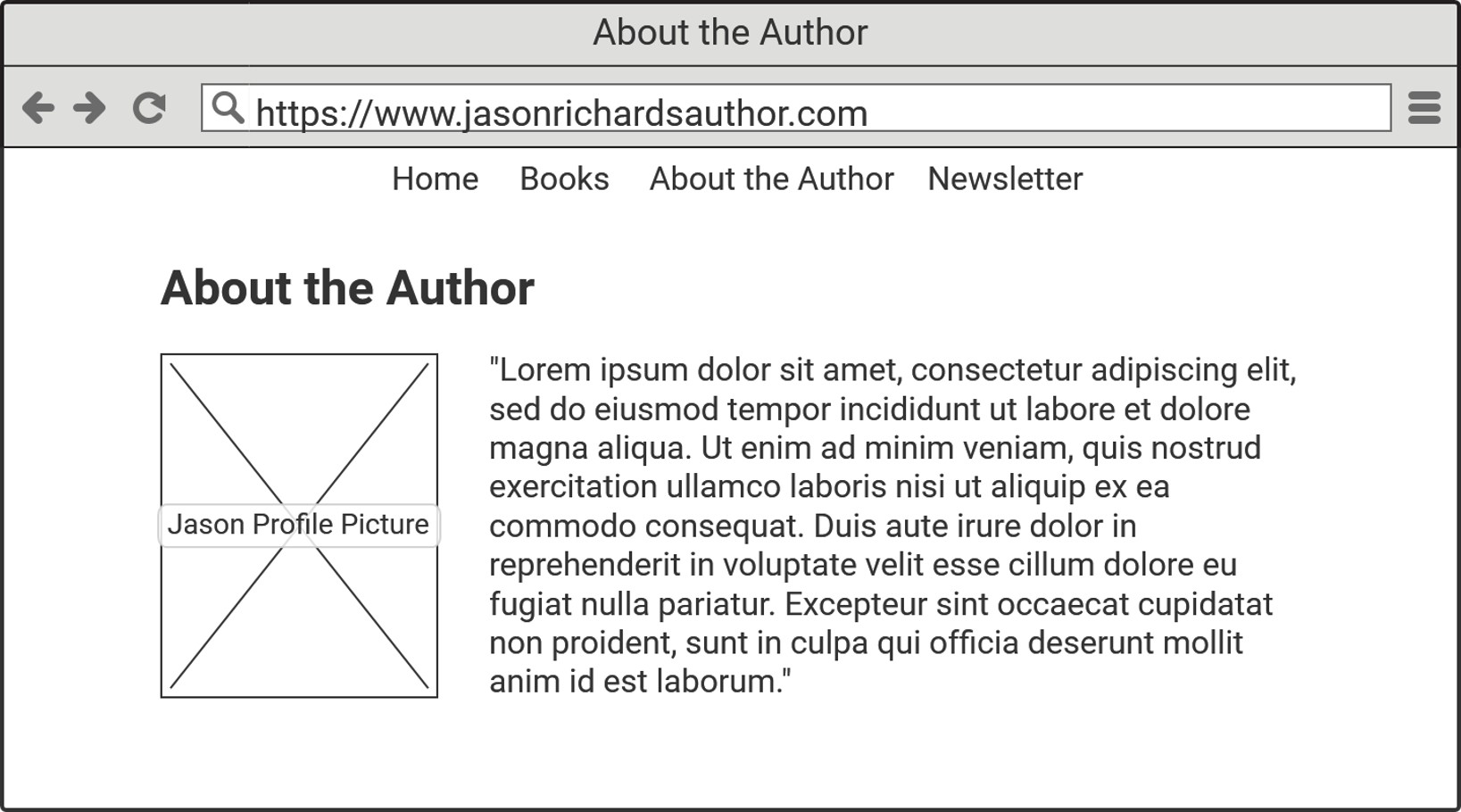
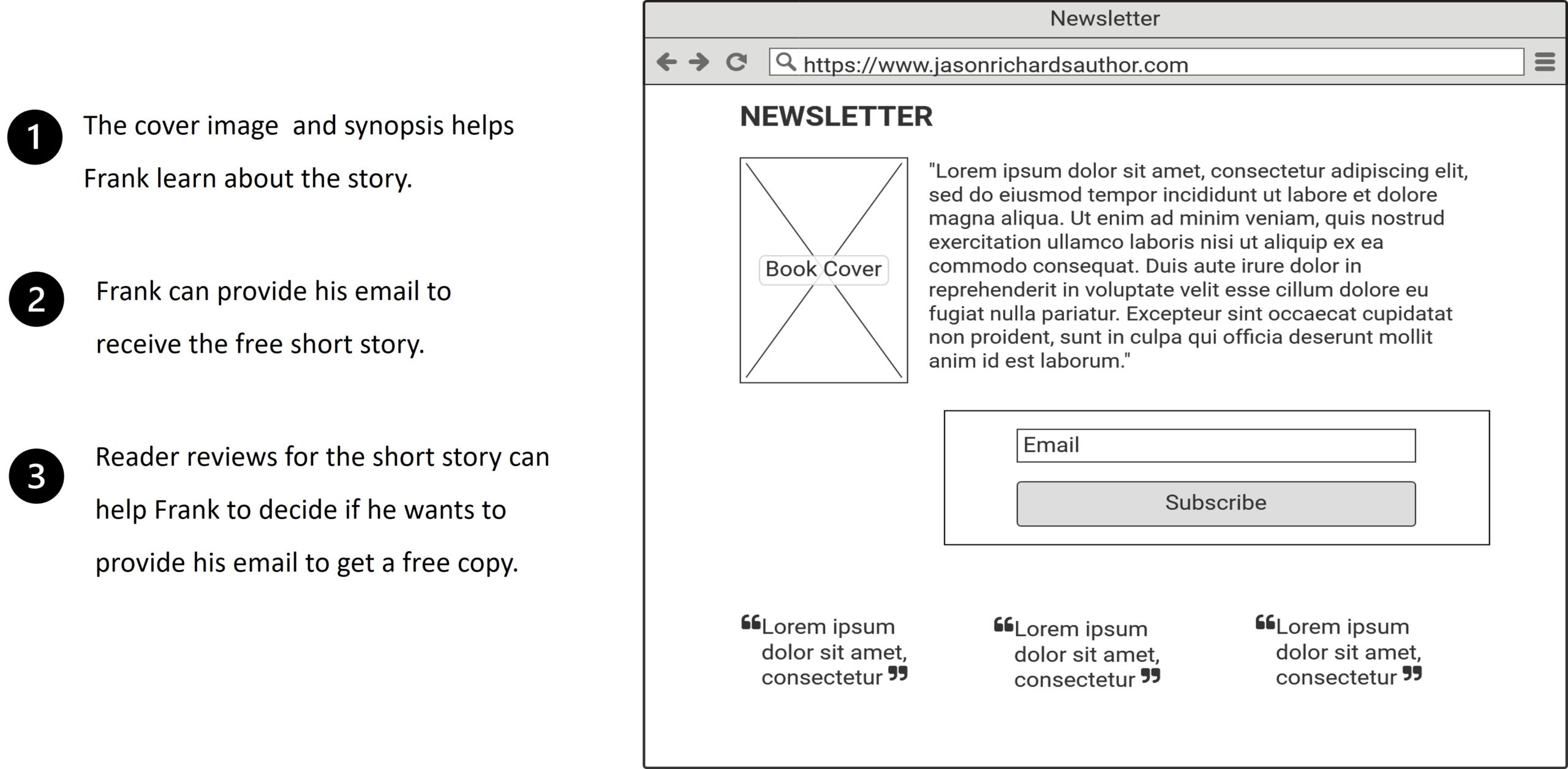
Author Branding and Visual Design
Book covers for the series were significant drivers for the visual aspects of Jason’s branding within the genre, so those were incorporated into the website visuals.
I tied this together with the best-selling indie thriller author competitive analysis and wireframe layouts.
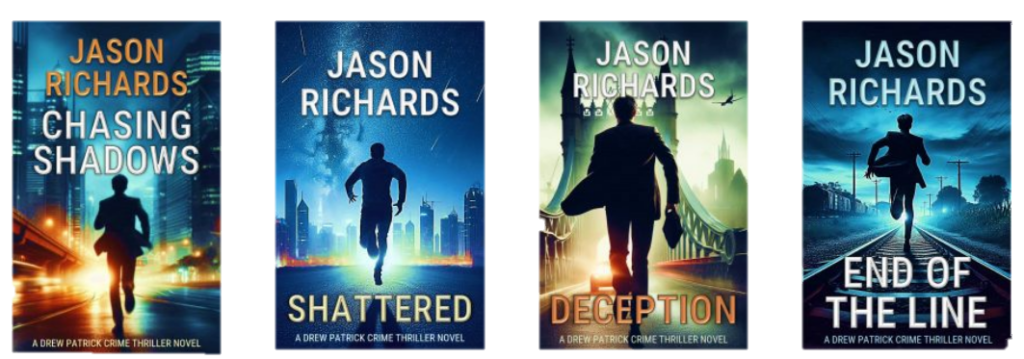
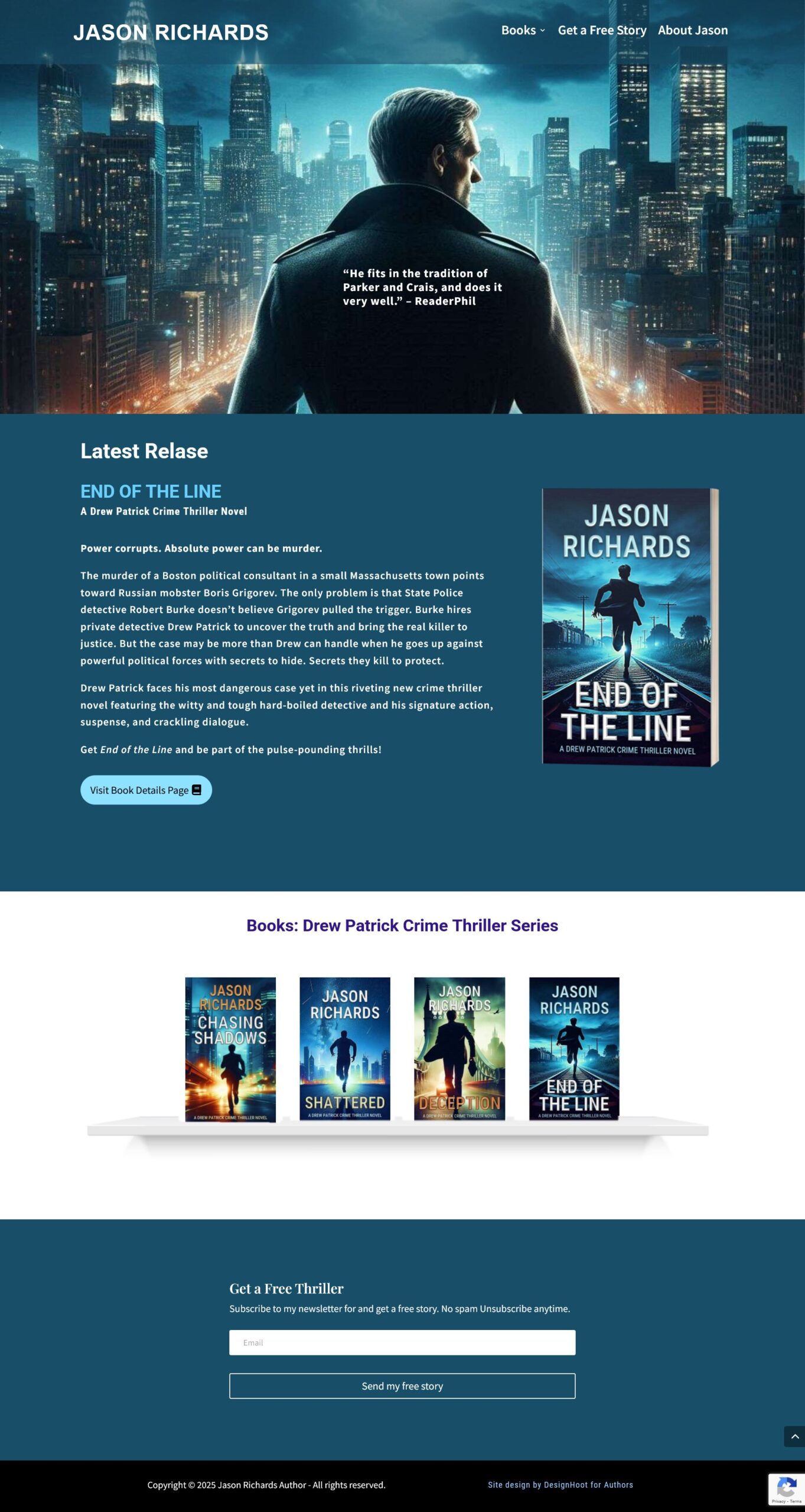
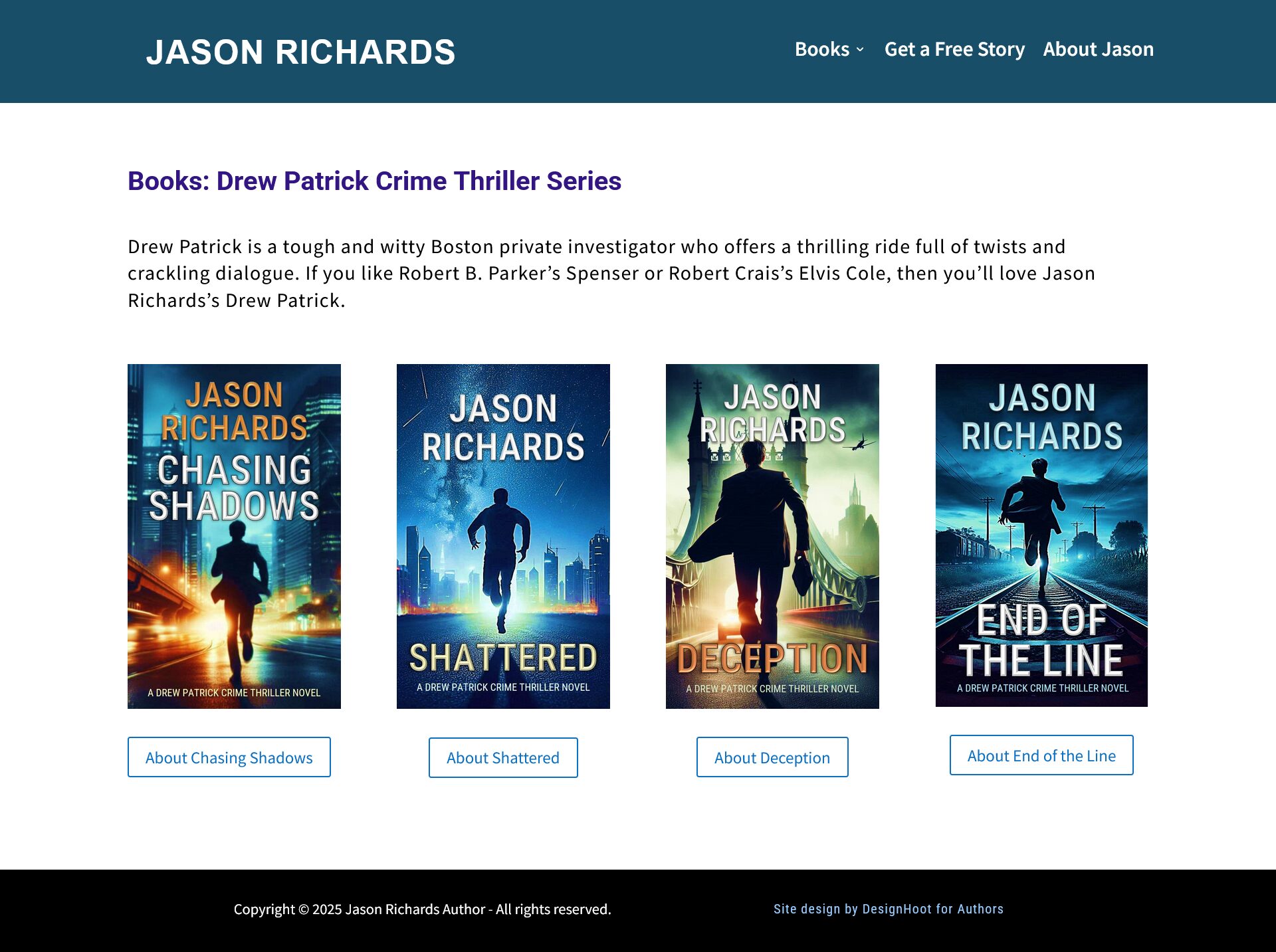


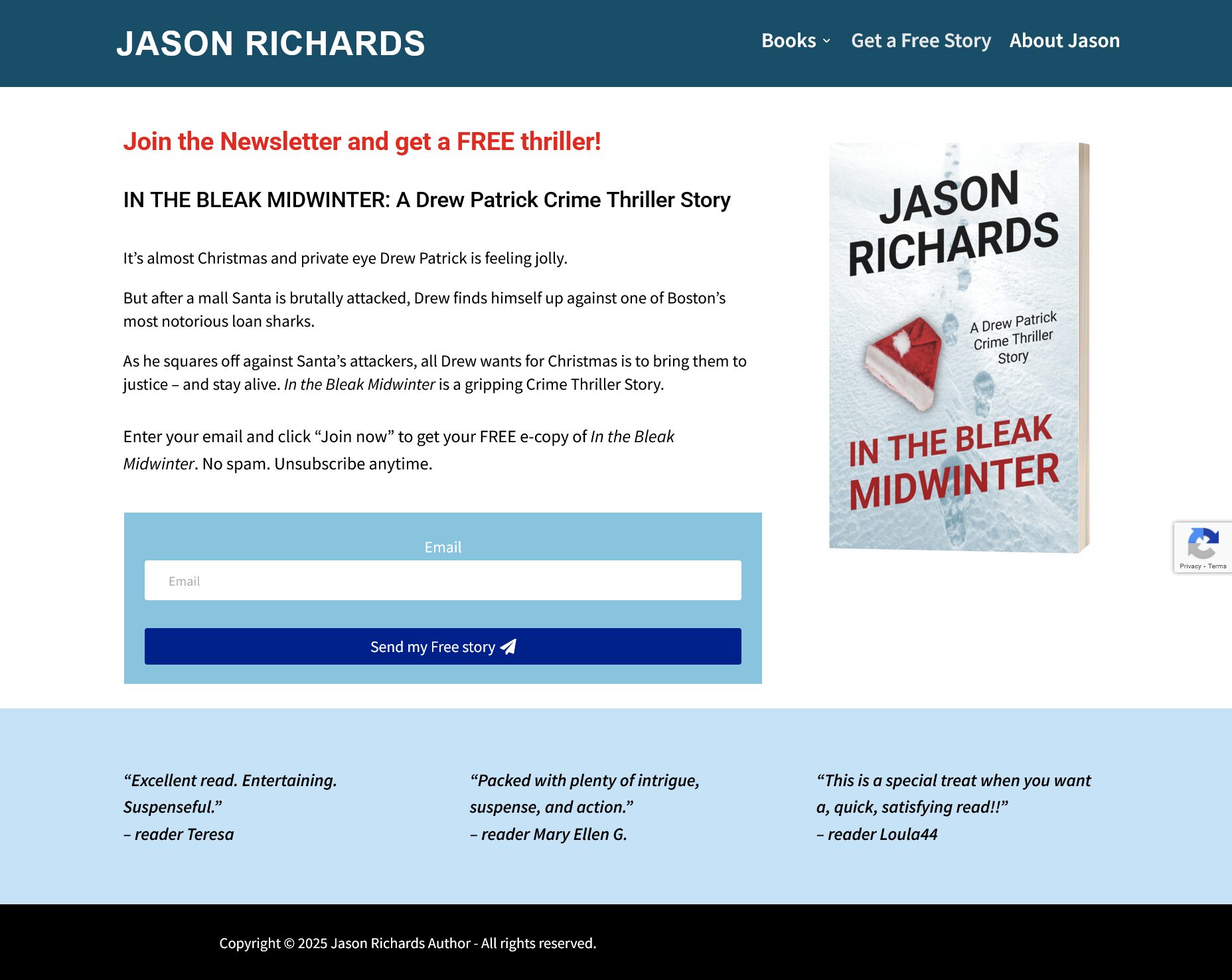
User Testing with Thriller Readers
I conducted moderated user testing with 10 readers. While the overall design scored very well with readers, there were a few key takeaways that resulted in design iterations, follwed by A/B testing.
Key Takeaways for Iterations and further testing:
- 7 out of 10 readers expected a free book email CTA near the top of the page
- 6 out of 10 readers commented they would like information about each book on the series page
A/B Testing
I ran A/B tests with 100 readers on the original and revised page designs for the Home page and Book Series page.
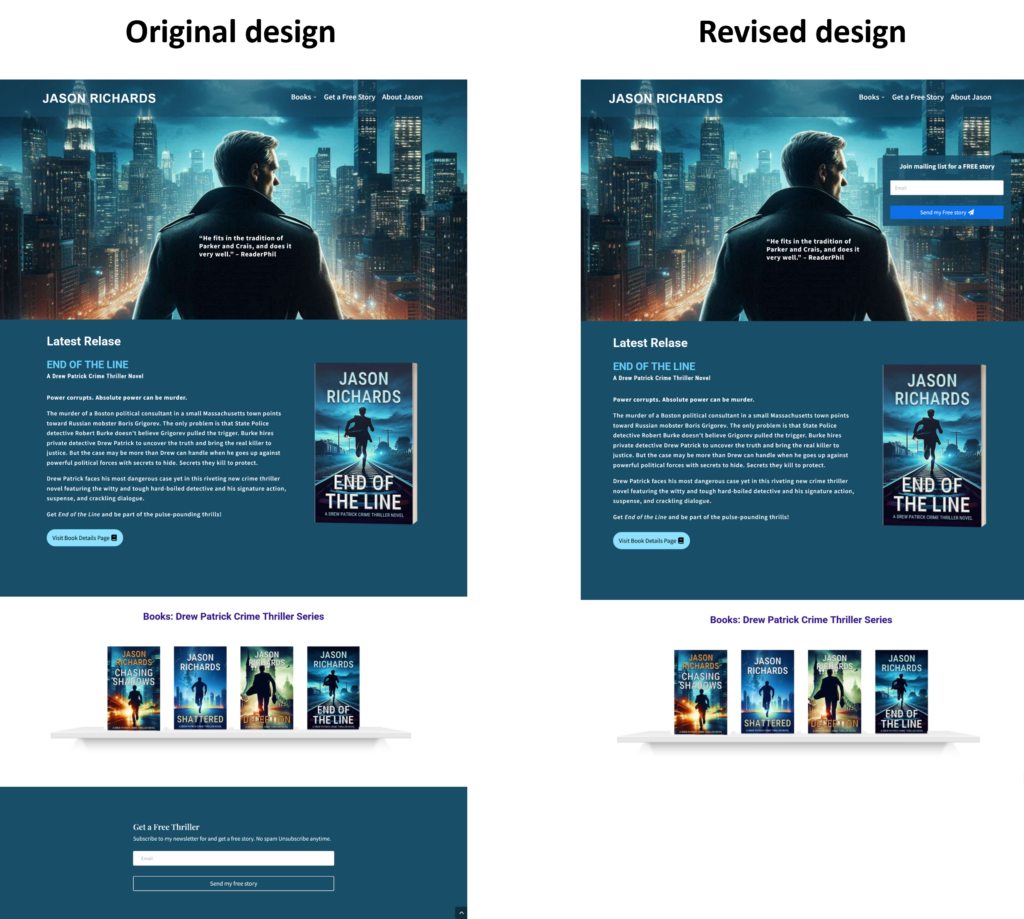
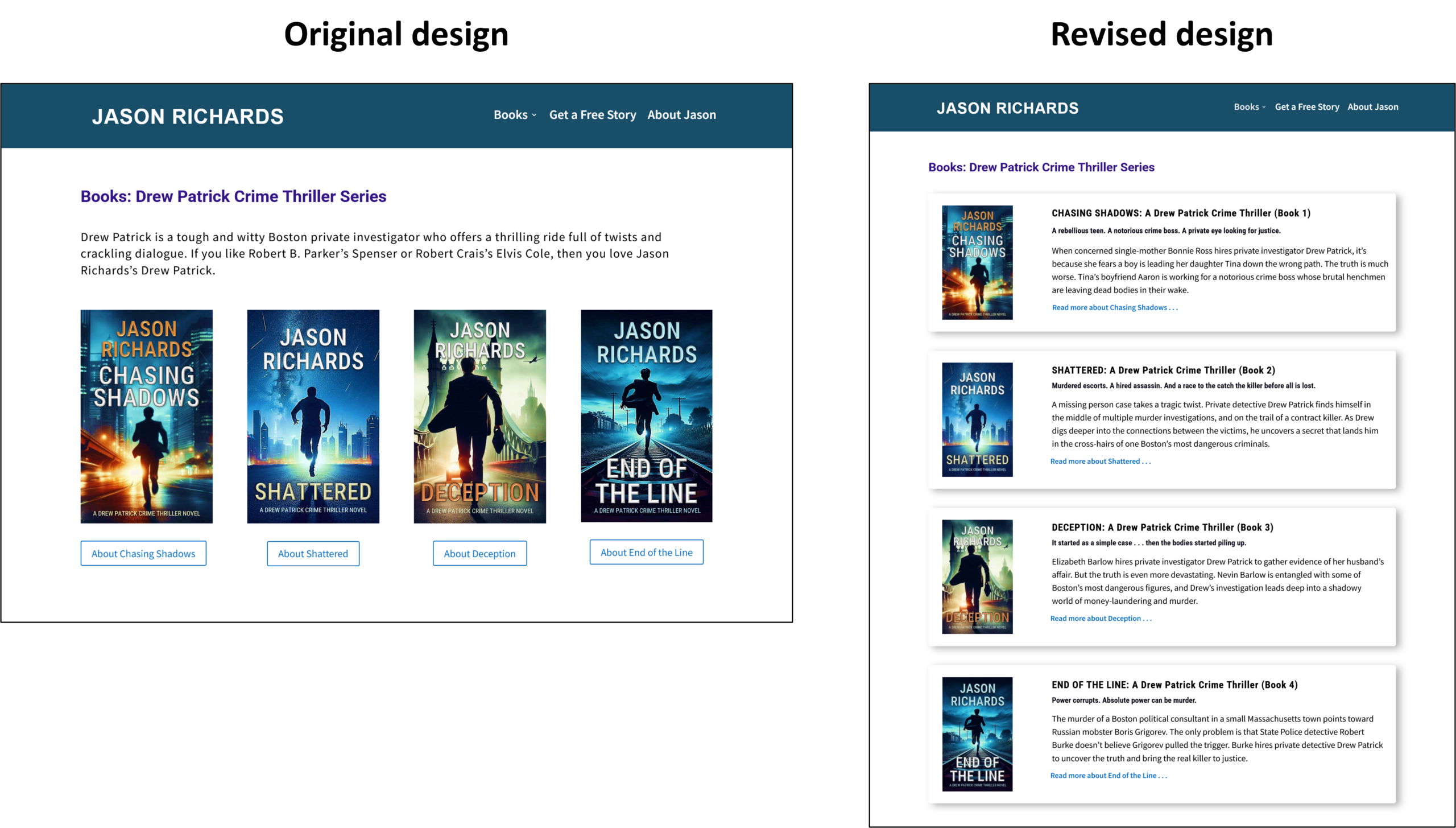
A/B Testing Results
In both cases, users favored the revised designs.
- Home page revision 90%
- Book Series page revision 70%
Launching Jason’s Author Branded Website

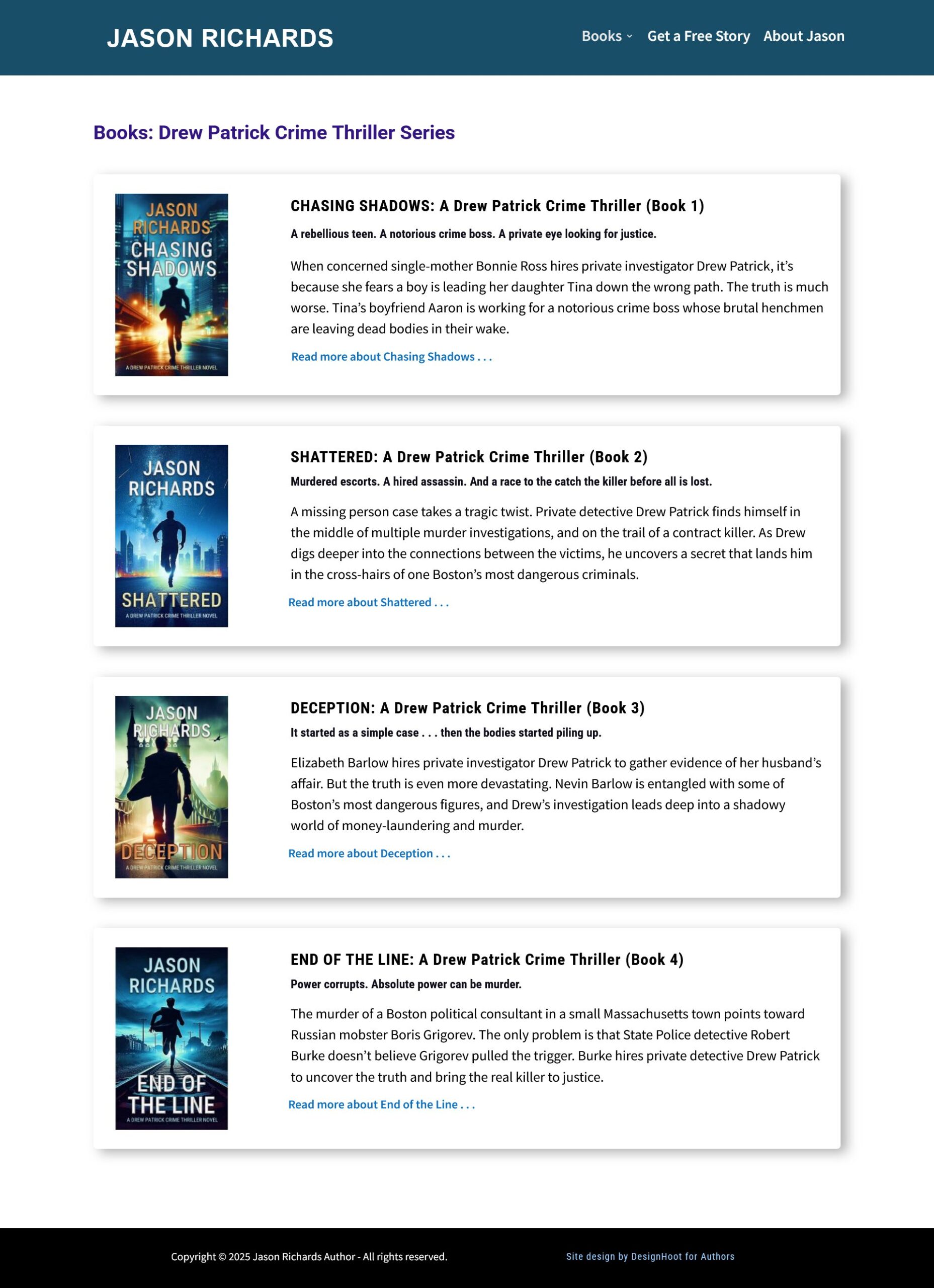

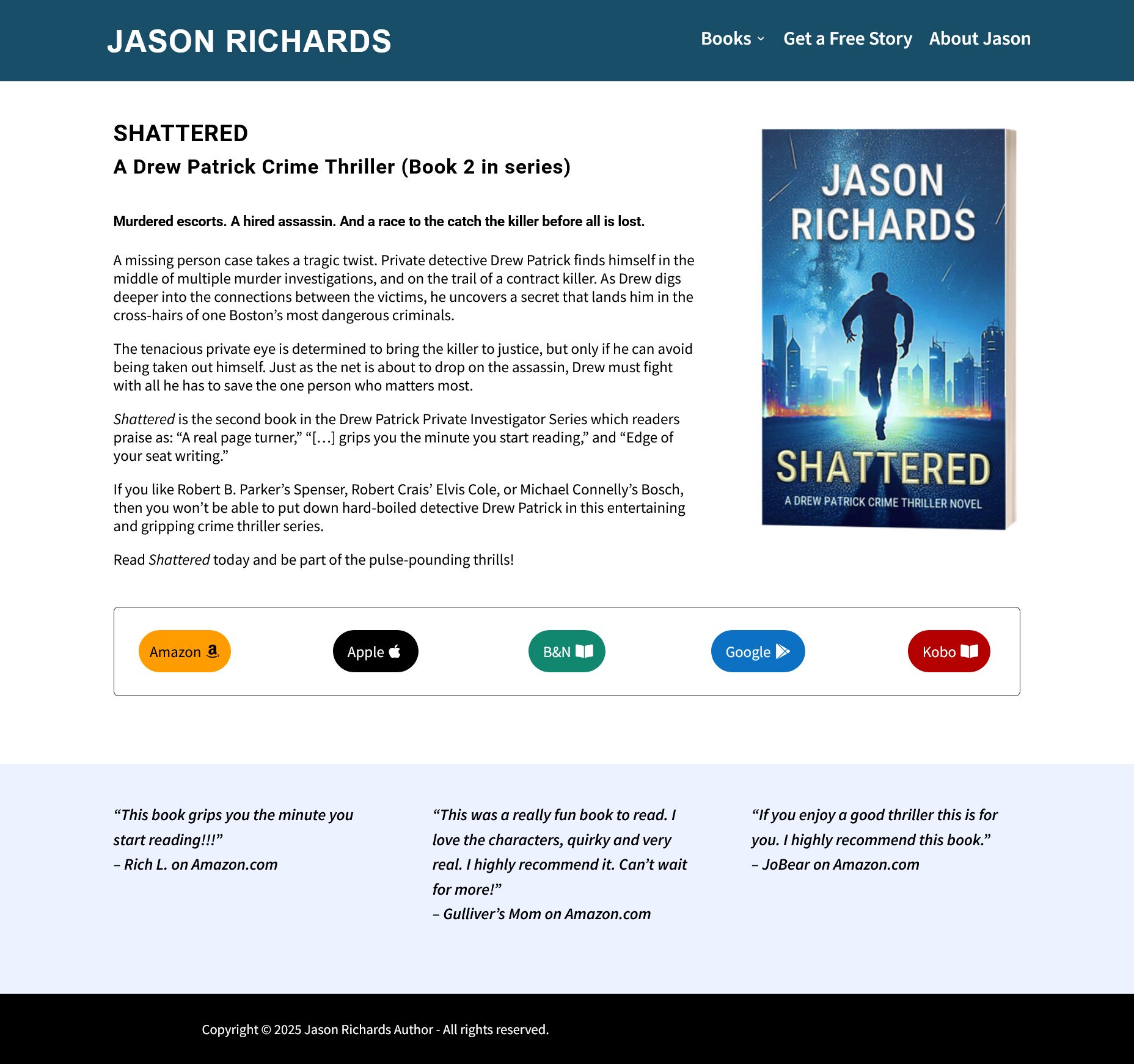

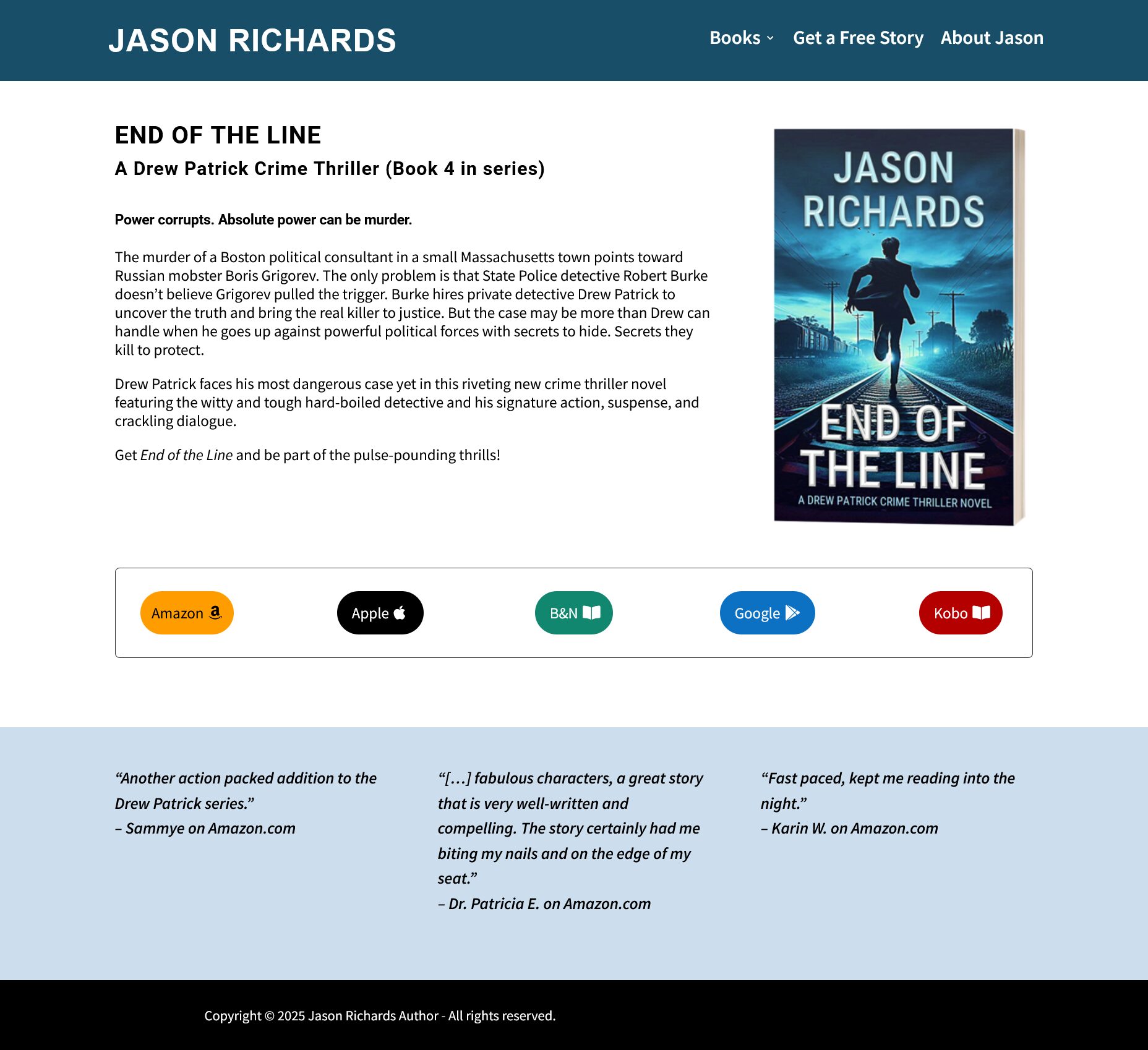


Responsive and Accessible
More readers are using their mobile devices to access websites, and Jason’s website is fully responsive and specifically formatted to look great across all screen sizes.
My design for Jason’s website follows the Web Content Accessibility Guidelines (WCAG) as the international standard for web accessibility.

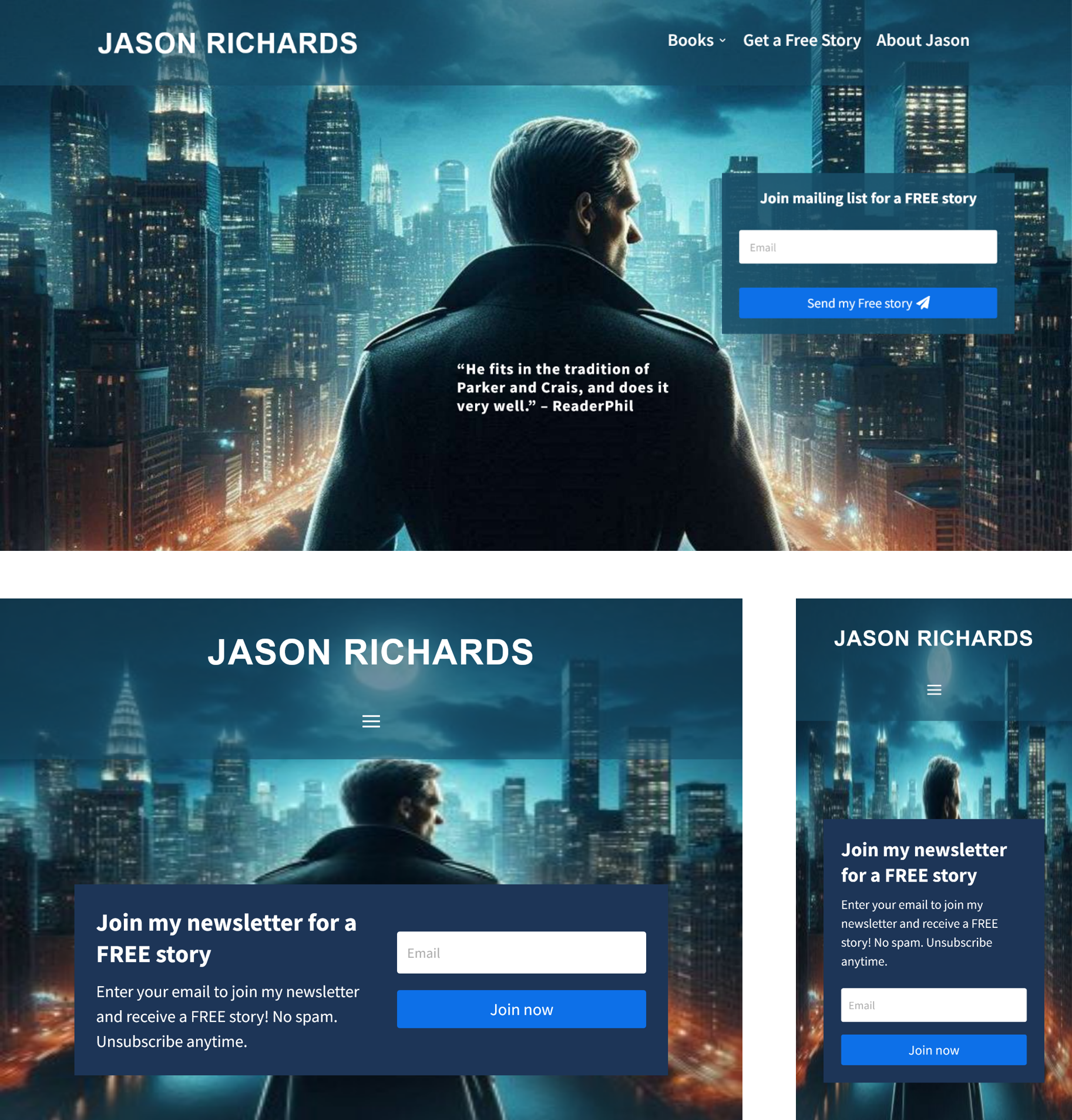
Key Outcomes
Designed Crime Thriller author Jason Richards’s website that helpled him grow his author brand by meeting genre reader expectations in the design and allowing users to access information without friction.

